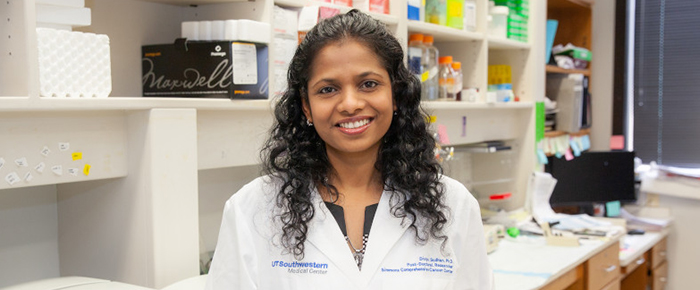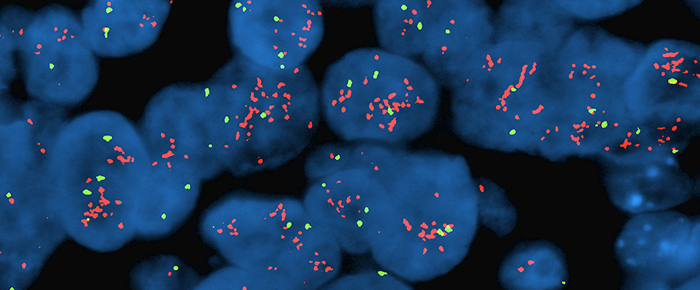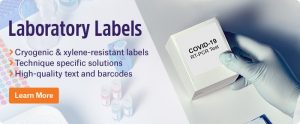 This is the first in a series of interviews delving into the lives of scientists and their research. This week’s Research Spotlight features Dr. Dhivya Sudhan, a postdoctoral fellow working in the lab of Dr. Carlos Arteaga, who studies translational cancer research.
This is the first in a series of interviews delving into the lives of scientists and their research. This week’s Research Spotlight features Dr. Dhivya Sudhan, a postdoctoral fellow working in the lab of Dr. Carlos Arteaga, who studies translational cancer research.
Finding new therapies for drug-resistant breast cancer
Dr. Sudhan is a specialist in elucidating mechanisms through which breast tumors become resistant to standard-of-care therapy. Her studies primarily focus on human epidermal growth factor receptor 2 (HER2)-mutant cancer, estrogen receptor (ER)-positive breast cancer, and HER2-positive breast cancer. Current therapies for these types of breast cancers are targeted; that is, they act to inhibit specific cancer-causing genetic abnormalities. However, in patients with metastatic disease, the response to these treatments is often short-lived.
When it comes to HER2-mutated cancer, Dr. Sudhan focuses primarily on the tyrosine kinase inhibitor (TKI) neratinib, which is under clinical investigation for many types of cancers, including breast, cervical, and biliary. Dr. Sudhan explained that the guiding force for this project was based on clinical findings:
“Results from the phase II SUMMIT basket trial shows significant clinical activity of neratinib against a subset of HER2-mutant cancers; however, these favorable responses were tempered by the frequent occurrence of de-novo and acquired resistance. Our goal was to discover clinically-actionable mechanisms of resistance to neratinib in HER2-mutant cancers and to identify a novel therapeutic strategy to restore responses in tumors exhibiting these resistance mechanisms.”
“I have been trying to deepen my understanding of this very complex disease and have focused on oncology drug discovery.”
Turning the tables on mTOR
In an article published in Cancer Cell last year, Dr. Sudhan used genomic and transcriptomic profiling to discover that one of the main effectors of resistance to neratinib was the master regulator of cell growth, mechanistic target of rapamycin (mTOR). Though it has many functions throughout normal development, mTOR is a known driver of cancer growth and proliferation, with a variety of anti-cancer drugs already approved that target its activity.
“We tested several neratinib-resistant models of diverse histological origins and consistently noted TORC1 (mTOR complex 1) activation as a common node that mediated neratinib-resistance. In a subset of HER2-mutant cancers, neratinib resistance was caused by RAS hyperactivity, which activated both PI3K and MAPK axes to promote TORC1 signaling. In breast cancer, it appears that TORC1 hyperactivity occurs via mutations that activate PI3K signaling. Thus, different cancer types acquired different TORC1 activating mechanisms to restore the signaling pathway downstream of HER2.”
More specifically, Dr. Sudhan mentioned that in the tumors she treated with neratinib, there was a wide spectrum of mutations in the PI3K pathway and in RAS and RAS regulators. In 5637 bladder cancer cells that acquired neratinib resistance, a RASA2 truncating mutation was absent at baseline. RASA2 is a RAS GTPase activating protein that inactivates RAS by promoting the hydrolysis of RAS-GTP to RAS-GDP. On the other hand, de-novo resistant HER2-mutant breast cancer cell lines and patient-derived xenografts harbored PIK3CA activating mutations.
The next step for Dr. Sudhan is assessing the best way of treating patients who develop mTOR-mediated resistance to neratinib. She noted that clinical trials are already underway, with a phase I trial to determine whether the combination of neratinib and mTOR inhibitors, like everolimus, can prolong responses in patients with HER2-mutant cancers.
Profiling resistance to endocrine therapy
Another project of Dr. Sudhan’s involves patients that have ER-positive breast cancer. In keeping with her focus on identifying mechanisms of resistance to targeted therapies, she’s currently profiling tumors from patients who are undergoing therapy with antiestrogens (compounds that inhibit estrogen production). “Our endocrine resistance project is a neoadjuvant trial wherein patients with ER-positive breast cancer receive letrozole—an aromatase inhibitor—for two to three weeks before undergoing surgery. Prior studies have shown that Ki67-based measurement of the proliferation index of breast tumors after neoadjuvant endocrine therapy correlates with recurrence-free survival. We’re utilizing Ki67 as an early pharmacodynamic biomarker of efficacy to identify patients with intrinsically resistant tumors that are potentially destined to an early recurrence. Patients whose cancers have low Ki67 level at the time of surgery are considered responders and those with high Ki67 are considered to be refractory to letrozole treatment. We are currently performing genomic, transcriptomic, and proteomic profiling of these tumors to identify clinically-actionable mechanisms of endocrine resistance.”

Dr. Subhan’s motivation for cancer research was sparked with one visit to a hospital
“When I was an undergrad, I visited a cancer hospital with one of my friends who was supposed to donate blood to a child with leukemia. This was my first and most painful encounter with cancer. It was at the Tata Memorial Cancer Hospital, one of the biggest cancer hospitals in India. Even the air in that place was filled with so much grief that it hit me like a wall. I wept for hours and knew right away I had to do something. That was my calling.”
“Since then I have been trying to deepen my understanding of this very complex disease and have focused on oncology drug discovery. I wanted to strengthen my knowledge and skillset in translational oncology so I could contribute to drug development and advance patient care.”
LabTAG by GA International is a leading manufacturer of high-performance specialty labels and a supplier of identification solutions used in research and medical labs as well as healthcare institutions.




